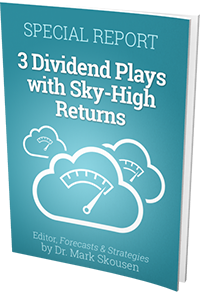Calls and puts are option contracts between a buyer, who is known as the holder, and a seller, who is known as the writer.
A call option gives the holder the right, but not the obligation, to buy an underlying security at a predetermined price, known as the strike price, by a predetermined expiration date. A put option gives the holder the right to sell an underlying security, such as stock, at the strike price by the expiration date.
Calls and puts have the potential for tremendous upside but they also have the potential for losses. This article should prepare investors to seek big returns by using call and put options and help investors manage the risk involved with trading options.
Calls:
If an investor buys a call option, then he expects the market value of the underlying security to increase. If an investor writes a call option, then he expects the market value of the underlying security to decrease or stay relatively the same.
If the holder exercises his right and buys the shares of the underlying security, then the writer of the call option is obligated to sell him those shares. If the holder does not exercise his right before the expiration date, then the option expires and becomes worthless.
Let’s look at examples of buying and selling call options.
- Buying a call option: Assume Bed Bath & Beyond Inc. (NYSE: BBBY) has a price per share of $20. Suppose an investor buys one call option for BBBY with a strike price of $25 that expires in one month because he expects the stock’s price to rise above $25 in the next month. The option buyer has the right to buy 100 shares of BBBY at a price of $25 until the expiration date. One option is equal to 100 shares of the underlying stock. Imagine the buyer of the call option pays a premium of $2, or $200 total. Assume the market value of BBBY rises to $30 in that month. Now the option buyer can exercise the call option and buy 100 shares of the stock at $25, rather than $30, for a total of $2,500. He then can sell the shares at the market value price of $30. This generates a profit for the buyer of $3,000 (100 shares x price per share) – $2,500 (100 shares x strike price) – $200 (premium paid for each option) = $300 (profit).
- Selling a call option: Assume Under Armour, Inc. (NYSE: UA) has a price per share of $20. Here, the call option seller expects the market value of UA to decrease or stay the same. The call option seller then writes one call option for a premium of $2 per share, or a total of $200. That is the amount paid to the option seller. Suppose the option has a strike price of $22 and expires in three weeks. Imagine that in those three weeks, UA never rises to $22. The option expires as worthless. The writer keeps the $200.
Puts:
If an investor holds a put option, then he can make money if the market value of the underlying security falls. If an investor writes a put option, then he can profit if the market value of the underlying security rises or stays relatively the same.
If the holder exercises his right and sells the shares of the underlying security, then the writer of the put option is obligated to buy those shares from him. If the holder does not exercise his right before the expiration date, then the option expires and becomes worthless.
Let’s look at examples of buying and selling put options.
- Buying a put option: Assume International Business Machines Corporation (NYSE: IBM) stock is trading at $140. An investor buys a put option for IBM because he expects that stock to decrease in value. The strike price of the option is $137 and the expiration date is in three weeks. Suppose the option holder pays a premium to the option writer of $1 per share, or $100. Assume within those three weeks, the price of IBM stock goes down to $135. The option holder exercises his right on the put option, and buys the IBM shares at $135, but sells them at $137. The option writer is obligated to buy the shares from the holder at $137. This generates a profit of $2 per share, or $200 for the option holder. After paying the premium, the holder keeps $100.
- Selling a put option: Assume an investor owns 100 shares of the Sony Corporation (NYSE: SNE) at a market price of $50. He is betting that the share price of SNE will not fall below $45 over the next three weeks. He then collects a premium of $2 per share, $200 in total, by writing one put option on SNE with a strike price of $45 that expires in three weeks. Assume SNE closes above $45 for the next three weeks. The put option expires and becomes worthless. The option seller keeps the $200 premium and still owns the 100 shares. If SNE closed below $45, then the option could have been exercised by the option buyer, who would receive the 100 shares of SNE from the option seller. This would trigger a loss for the investor of $4,500 – $5,000 + $200 = $-300.
These examples give investors a basic idea of how calls and puts are used to generate a potential income or loss for investors. These examples can be used as learning lessons for personal investing on options.




